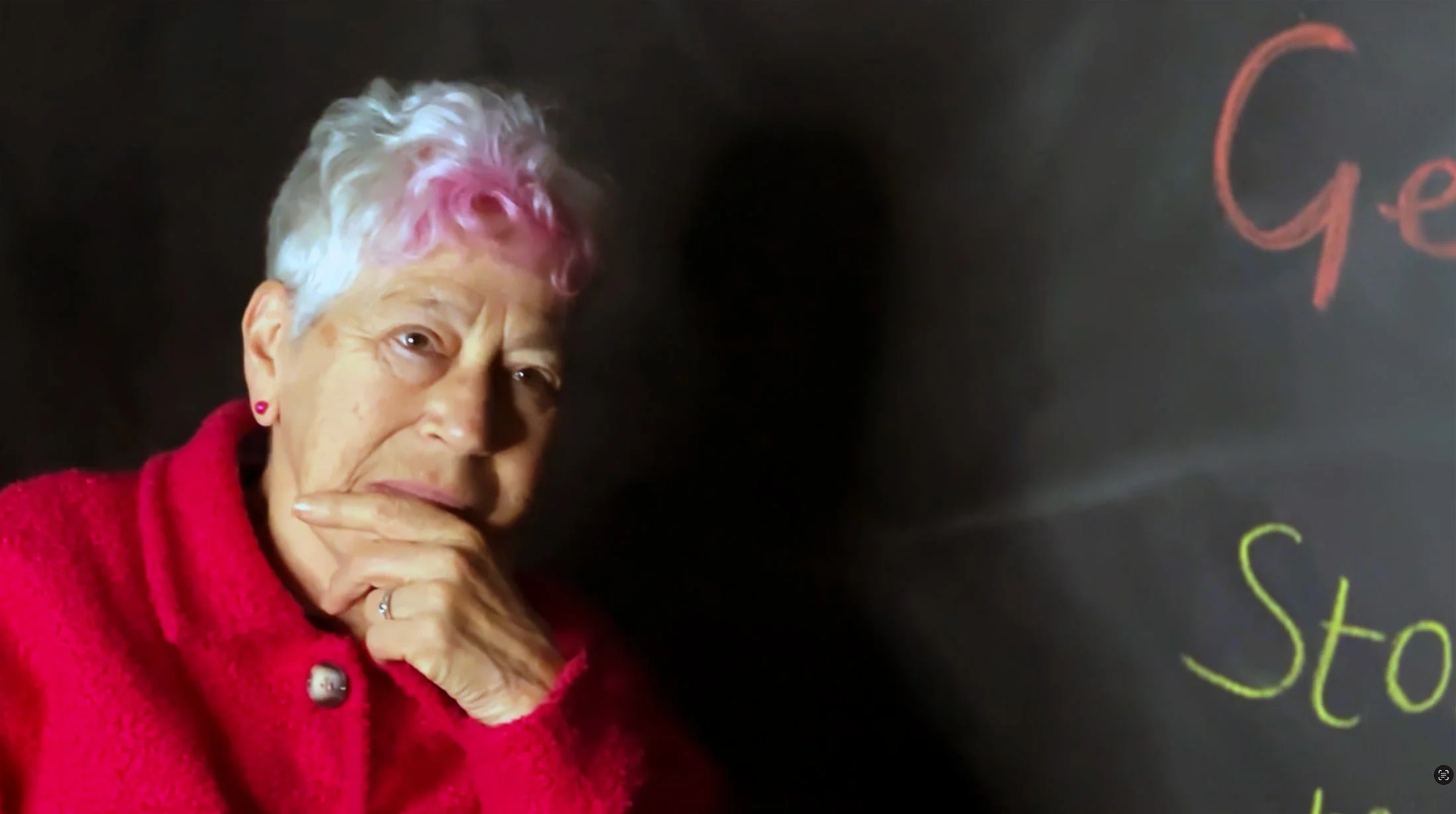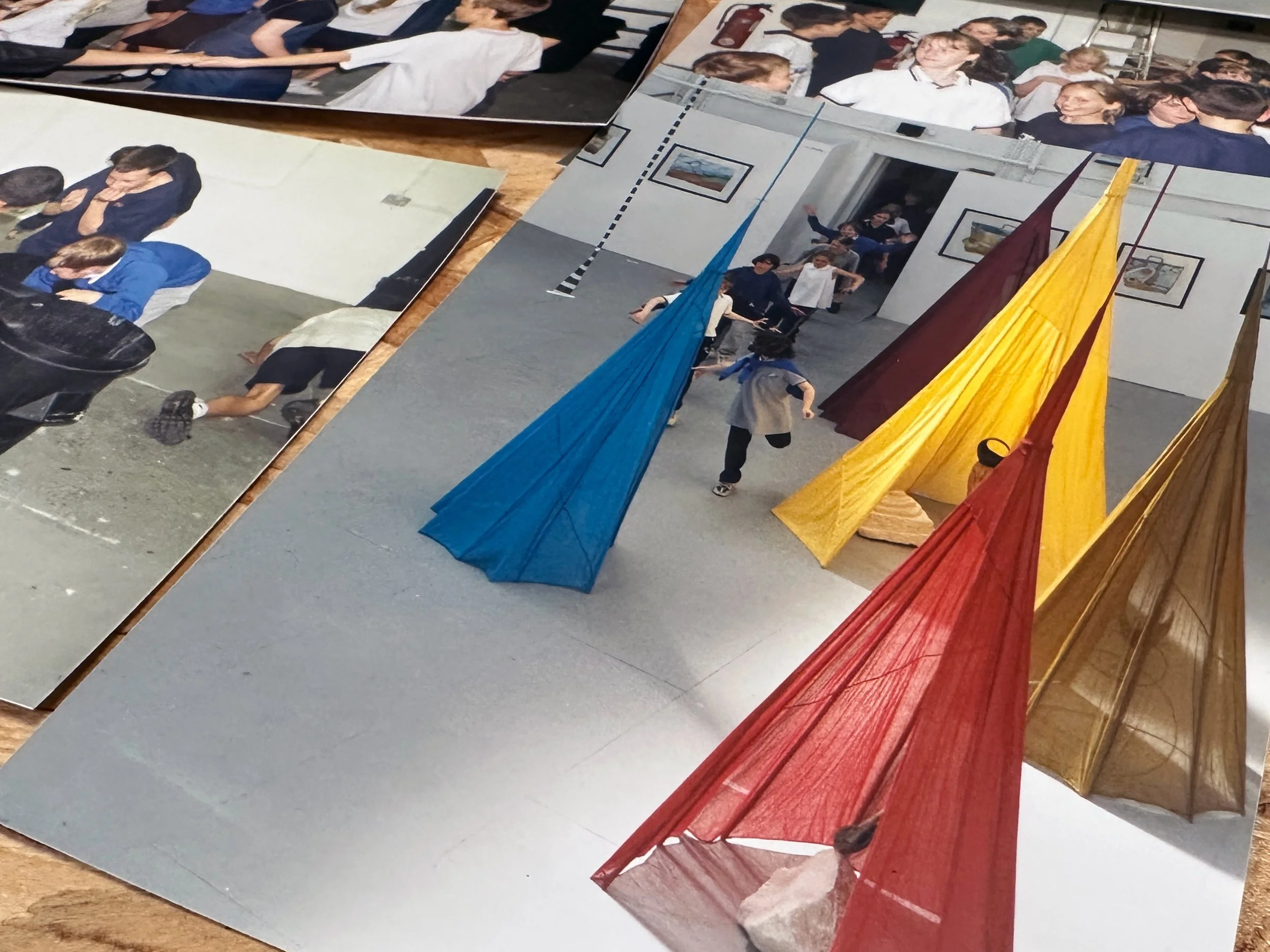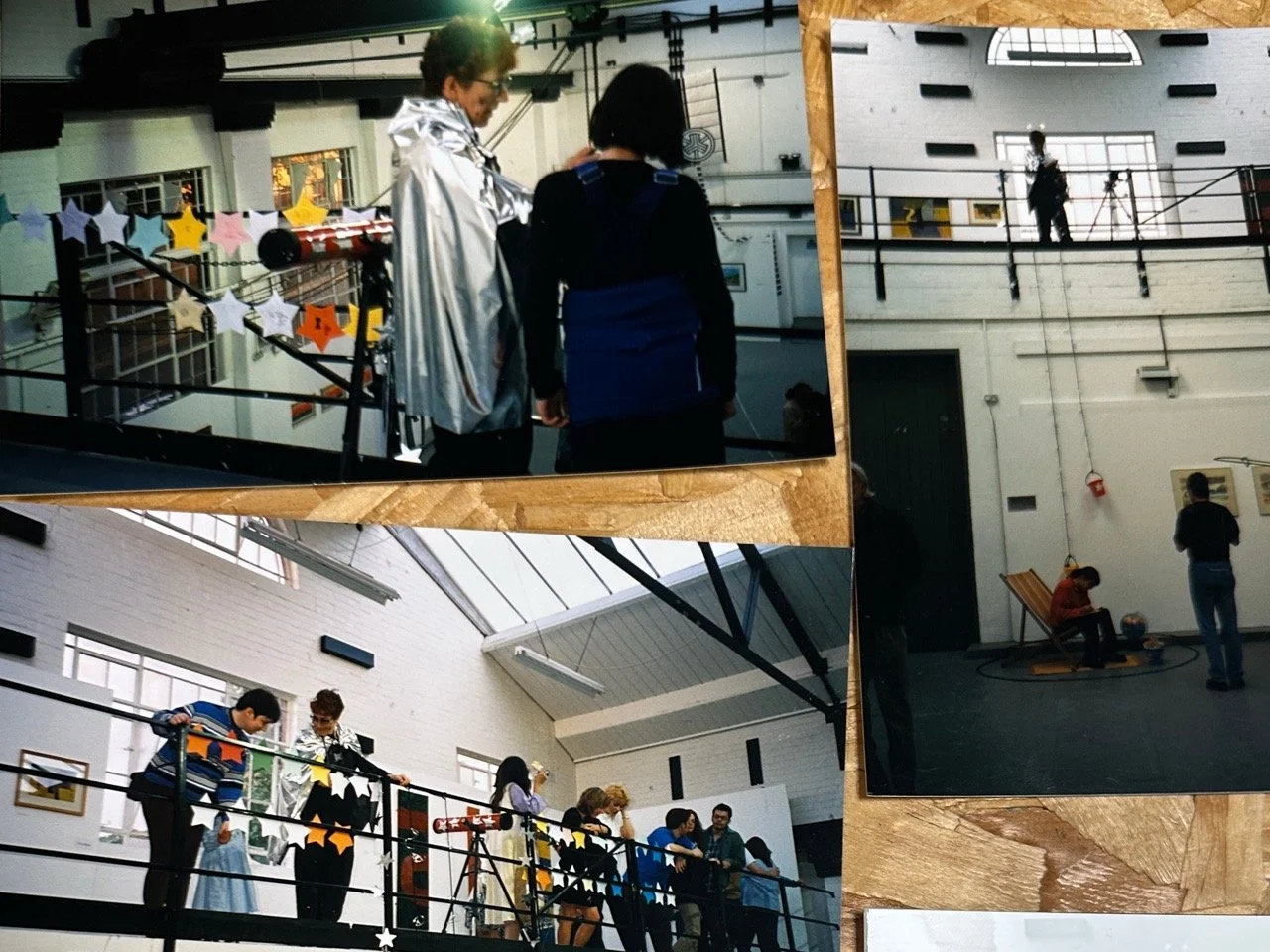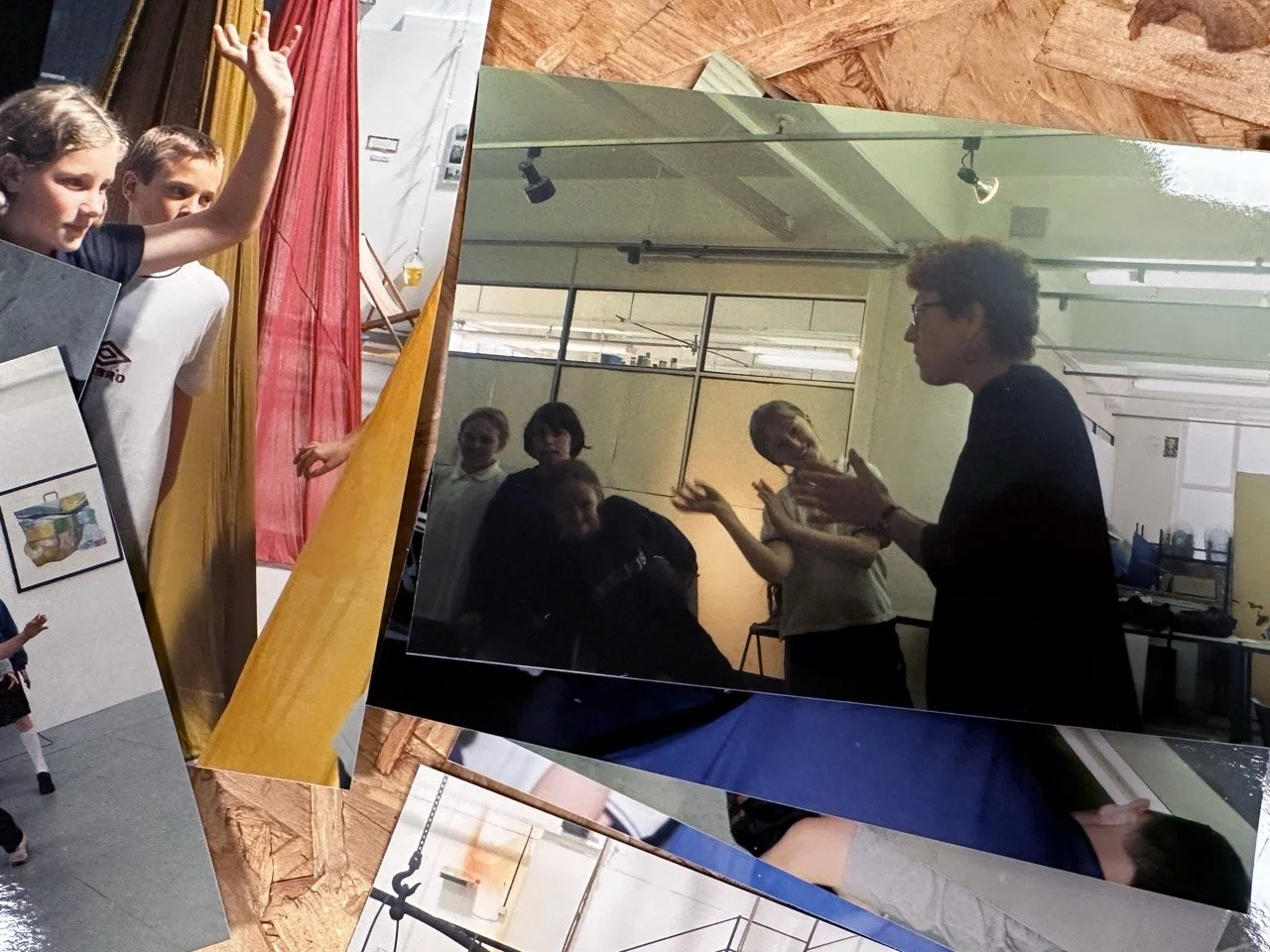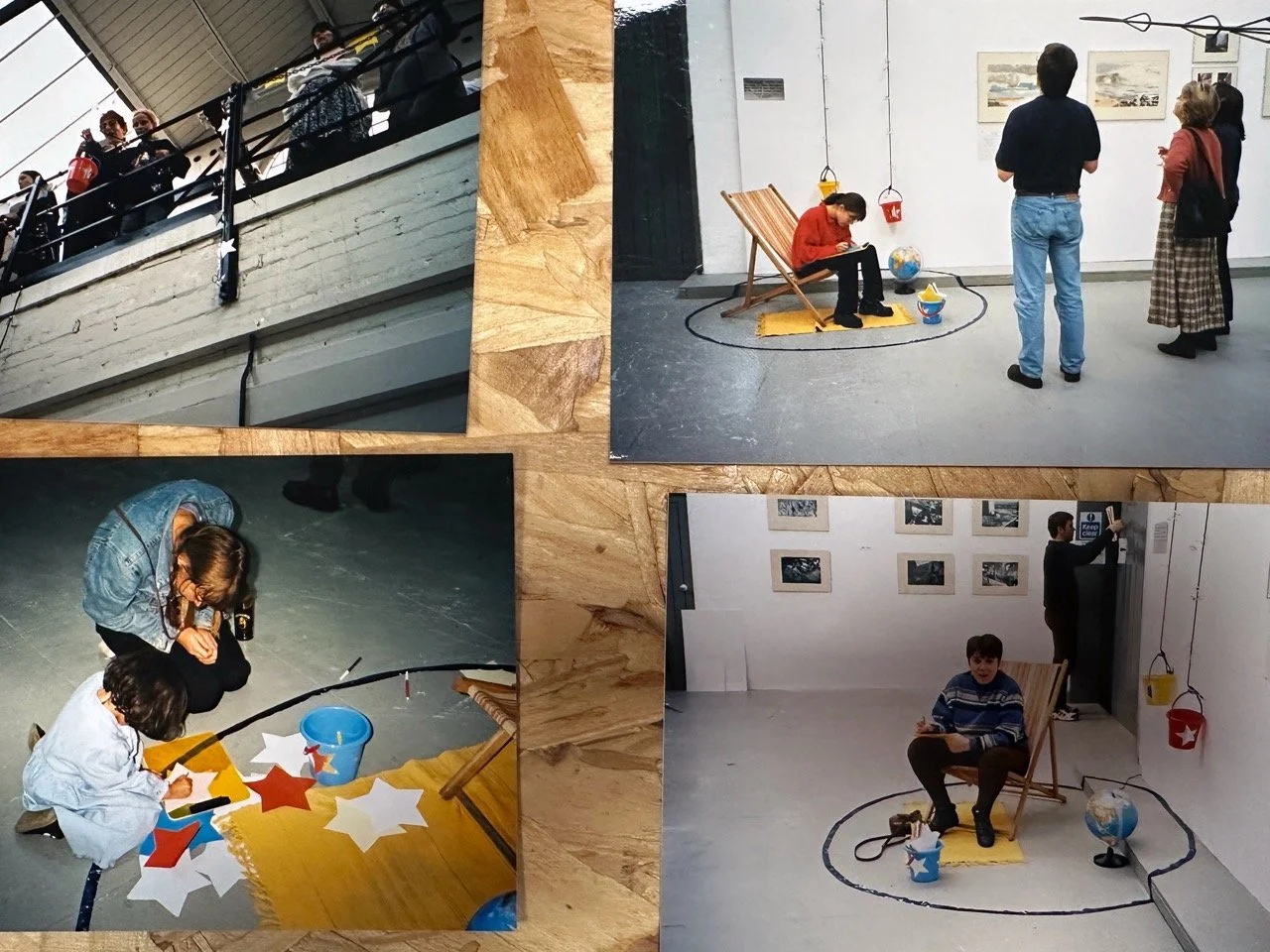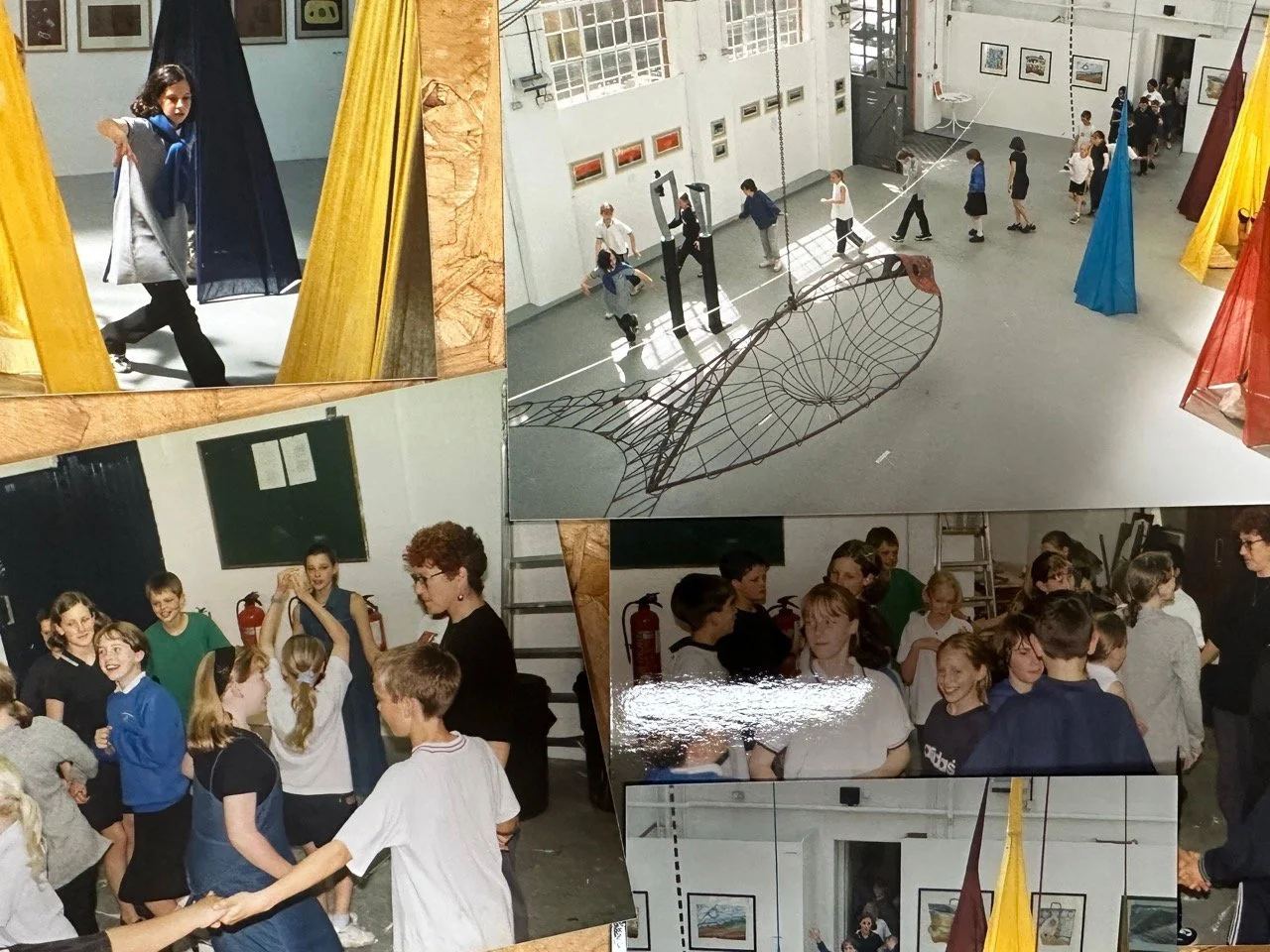From Greenham Common to The Generator: Evelyn Silver's Art of Resistance
We spoke with performance artist Evelyn Silver about her work at The Generator's first exhibition, her feminist anti-nuclear posters now showing at Tate Britain, and the power of community art
Evelyn Silver is living proof that the most powerful art comes from the margins. A self-taught performance artist whose work spans from the peace camps of Greenham Common to the mezzanine of The Generator, she's now having a moment of recognition that's decades overdue. Her feminist anti-nuclear posters from 1981 are currently touring with Tate Britain's "Women in Revolt" exhibition – work that emerged from streets and protest camps, not art schools.
Evelyn Silver, interviewed by Pasha Kincaid
Evelyn, you were involved with Artspace from the very beginning. Can you tell us about that first exhibition at The Generator?
Evelyn: I was involved from the start of Artspace, which was a group of artists that formed in the late 90s. We had our first exhibition at The Generator, and I did a performance at the private view. That must have been about 1998.
Can you tell us about that performance?
Evelyn: I devised it specifically for the opening and worked to the space. I was going to be "Star Woman" up on the mezzanine, looking down. I had a little area on the mezzanine and another at the bottom. But I'm really scared of heights! I'd sort of devised this performance and got a bit of funding from East Midlands Arts, then realized I'd struggle getting up there.
So I went to a hypnotherapist. On the night, there were lots of people because it was a private view – a ready audience. I had people writing messages to Star Woman on stars and putting them in a bucket that I was lowering down from the mezzanine. I was holding something and looking over the edge, probably pinning the messages along the rails of the mezzanine. I don't have huge memories of the details, but it worked with the space.
What was being part of Artspace like?
Evelyn: It was good because it was a new thing. I can't remember who had the vision for having the exhibition, but it was quite exciting being in the first one. And they're still going now, years later, which is amazing.
We met in each other's houses. I was the only performance artist – everyone else was painters, sculptors. Everyone drank instant coffee! Those are the kind of dated memories I have. But somehow it all came together.
How did The Generator as a building influence the work that could be made there?
Evelyn: It certainly influenced what I did because I designed the performance specifically for the building. It was a fantastic space for an exhibition – absolutely fantastic. There was a buzz around it. I don't remember there being any sort of community art exhibition of artists coming together in Loughborough before that.
It was big, there were a lot of us involved, and the private views had loads of people there. It became quite a social event. Because the exhibitions went on for a few years, they became quite good networking events.
Did you feel there was an artist community in the town?
Evelyn: It felt very good to be setting up something like that, definitely. I suppose I was perhaps at a different angle, not being a traditional visual artist – being more focused on performance. But I really supported the idea of lots of artists coming together.
What's your take on The Generator now and its potential?
Evelyn: I think it's so exciting! It's amazing that the building's been bought. It's been years of this vagueness about trying to get The Generator going. So I think it's really exciting for Loughborough.
What would you like to see happen there?
Evelyn: I'd like to see some exciting exhibitions. I'd like it to be exciting, but I wouldn't want it to be elitist or boring. I'd love to see performances and music – I assume that's going to be part of it. I think there could be a café for people, so it could become a really good center socially.
You mentioned you've come back to performance recently. Can you tell us about your practice now?
Evelyn: I've done other things as well along the way – like most artists, you survive however you can. But I've always been in art. I started out in community arts, so my work has always been about connecting with people. Performance was always part of that, so I see it as an ongoing part of what I've been doing.
Your work is currently showing at Tate Britain in "Women in Revolt." That's quite a moment of recognition.
Evelyn: This work is from 1981. I was involved with a small group of women artists and poets, and we created a feminist anti-nuclear poster exhibition. The whole exhibition went to about 80 different venues – it could be posted out to arts venues, women's groups, peace groups, whatever. When there was enough money, we were invited to accompany it with performances and poetry readings.
It was huge during the anti-nuclear movement. One poster shows the women's peace march from Cardiff to Greenham Common – that started the women's peace camp. It's got maps of Britain with the route of the march and a photo of me writing about the march.
The other is called "Women Are Stronger Than the Bomb" – it's got maps with 96 American bases marked, with little women's peace signs on each base.
How does it feel to have this recognition now?
Evelyn: For years, nobody wanted to know. The art world didn't want to know. That's what was so interesting about the "Women in Revolt" exhibition – most of it had been under the radar. So it's amazing suddenly being acknowledged. The private view was fantastic – it was like a reunion of the poster group from the 80s.
You didn't go to art school, did you?
Evelyn: No, never. My background was community arts, coming from the streets. That's why I was in a different sort of space to the other Artspace artists. But it was good to connect with them.
What would you say to the next generation of creatives?
Evelyn: Be true to yourselves. Do your own thing. And definitely connect – you're not on your own. Connect with community.
It sounds like the 80s was a particularly politically charged time for your work.
Evelyn: The nuclear threat was huge then. The anti-nuclear movement, the anti-apartheid movement – there was so much politics and protest happening. It was a really exciting time in many ways, very much about "how can we make change?"
How important is it for art to engage with political issues?
Evelyn: I think performance always animates a space, brings something alive. Art coming from real concerns, real communities – that's where the power is. The Generator was always a good place to do a performance because it had that energy, that openness to different voices.
The Generator ~ 1998

